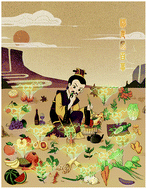Plant-derived melatonin from food: a gift of nature
Abstract
In recent years, people have become increasingly interested in bioactive ingredients from plants, especially antioxidant molecules such as melatonin, which are beneficial to human health. The purpose of this article is to provide new information on plant-derived foods with a high content of melatonin. We comprehensively summarize the content of melatonin in plant-derived foods and discuss the factors that influence melatonin levels to provide new ideas on enhancement. Additionally, we describe the biosynthetic pathway of melatonin and identify its major functions. Medicinal herbs are often rich in melatonin while many vegetables and fruits exhibit somewhat lower levels with wide variations among species. The genetic traits of plants, the phenological stage of the cultivar, the photoperiod, the level of stress to which the plants are exposed at the time of harvest, exposure to agrochemicals and determination methods are the main factors affecting the melatonin content. To date, standardization of uniform sampling times and the use of suitable pretreatments as well as determination methods have not been achieved. The results of the studies reviewed highlight the potentially important role of plant melatonin in influencing the progression of human diseases. Based on the health promotional aspects of melatonin, consuming foods containing higher concentrations of tryptophan and melatonin is suggested.

- This article is part of the themed collection: Recent Review Articles


 Please wait while we load your content...
Please wait while we load your content...